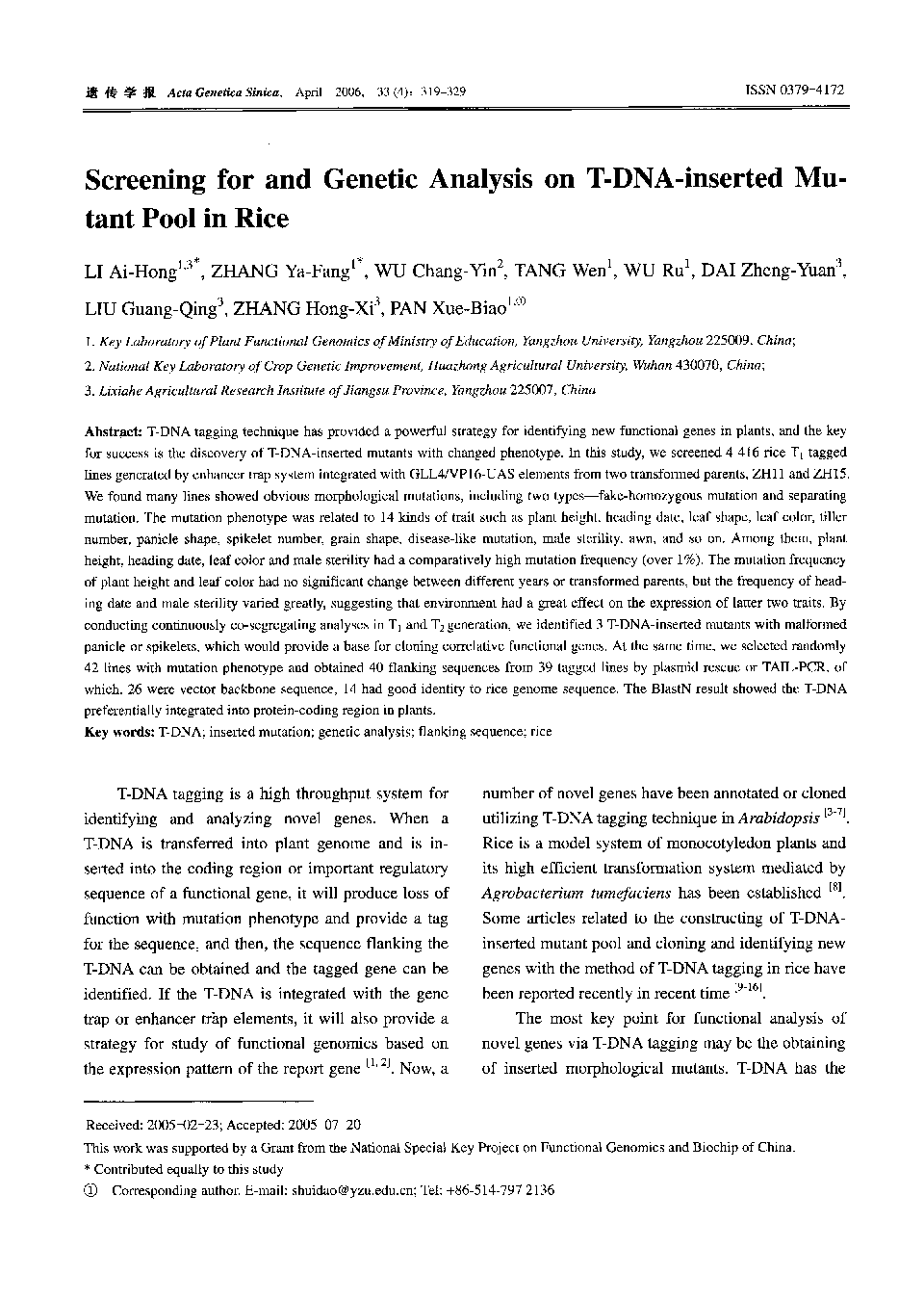| Article ID | Journal | Published Year | Pages | File Type |
|---|---|---|---|---|
| 2811295 | Acta Genetica Sinica | 2006 | 11 Pages |
T-DNA tagging technique has provided a powerful strategy for identifying new functional genes in plants, and the key for success is the discovery of T-DNA-inserted mutants with changed phenotype. In this study, we screened 4 416 rice T1 tagged lines generated by enhancer trap system integrated with GLL4/VP16-UAS elements from two transformed parents, ZH11 and ZH15. We found many lines showed obvious morphological mutations, including two types—fake-homozygous mutation and separating mutation. The mutation phenotype was related to 14 kinds of trait such as plant height, heading date, leaf shape, leaf color, tiller number, panicle shape, spikelet number, grain shape, disease-like mutation, male sterility, awn, and so on. Among them, plant height, heading date, leaf color and male sterility had a comparatively high mutation frequency (over 1%). The mutation frequency of plant height and leaf color had no significant change between different years or transformed parents, but the frequency of heading date and male sterility varied greatly, suggesting that environment had a great effect on the expression of latter two traits. By conducting continuously co-segregating analyses in T1 and T2 generation, we identified 3 T-DNA-inserted mutants with malformed panicle or spikelets, which would provide a base for cloning correlative functional genes. At the same time, we selected randomly 42 lines with mutation phenotype and obtained 40 flanking sequences from 39 tagged lines by plasmid rescue or TAIL-PCR, of which, 26 were vector backbone sequence, 14 had good identity to rice genome sequence. The BlastN result showed the T-DNA preferentially integrated into protein-coding region in plants.
